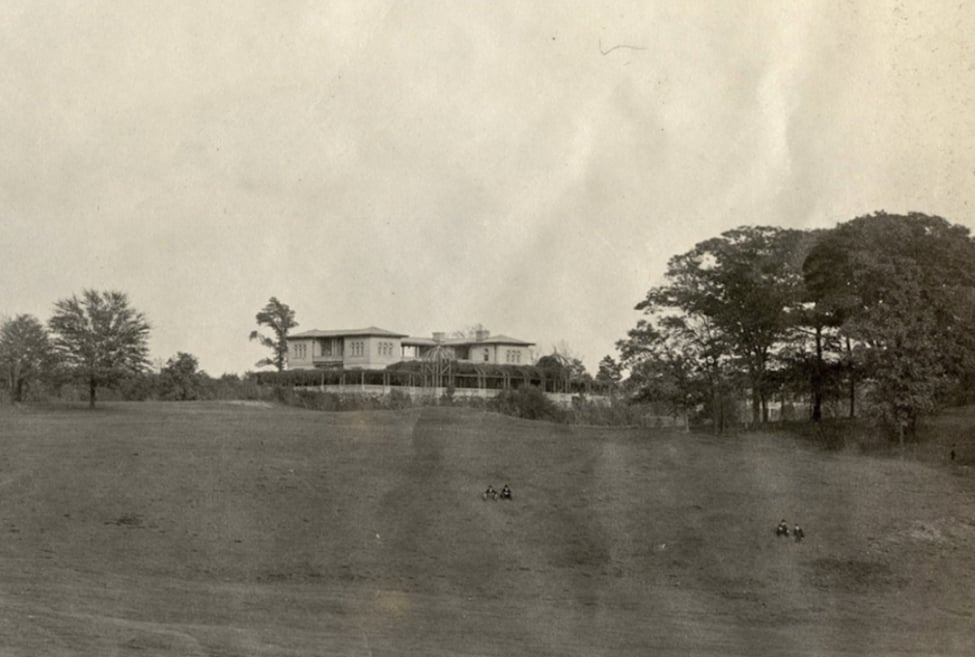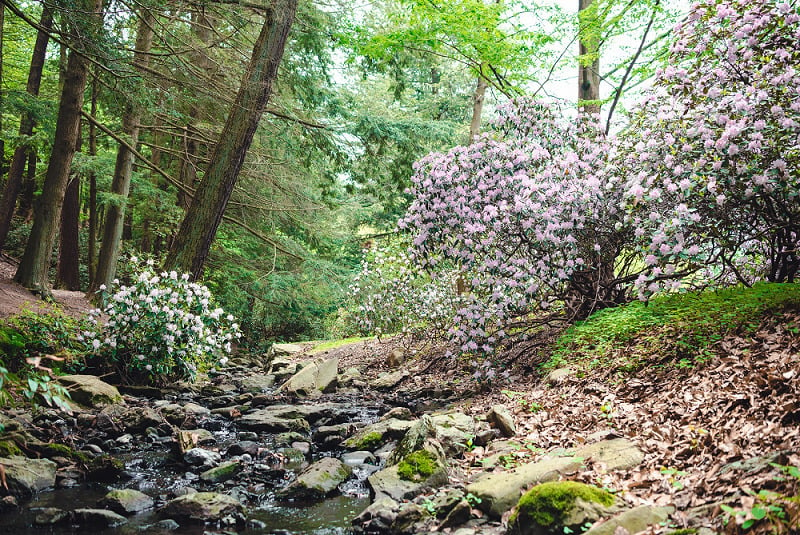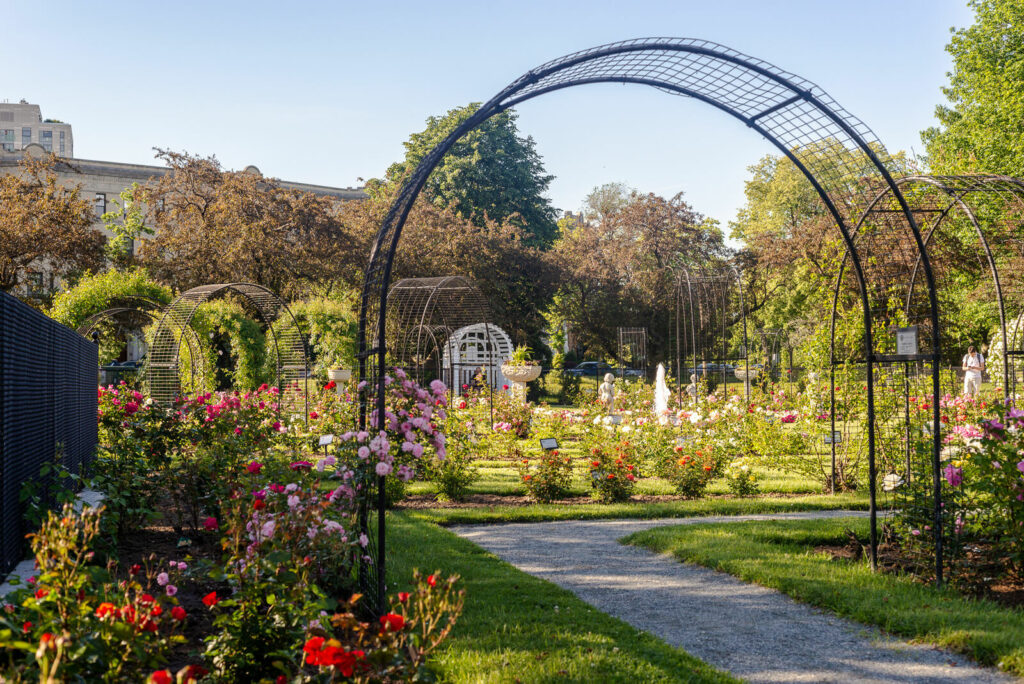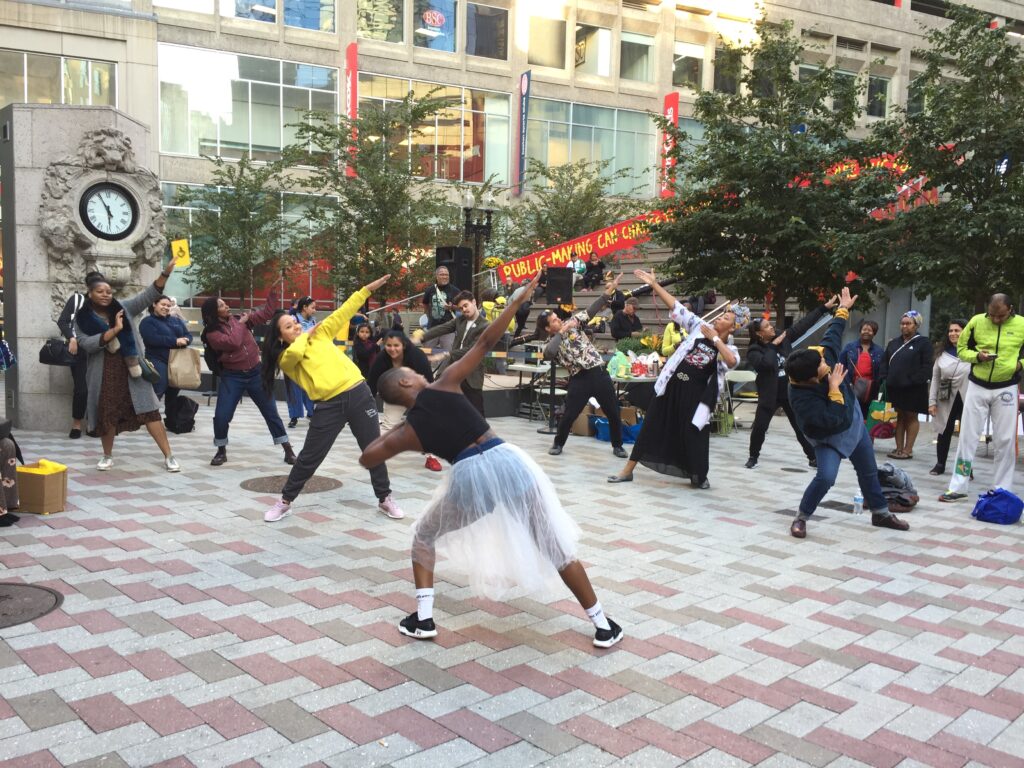For the first decade of Franklin Park’s operation, a pre-existing structure, the Sewall House, functioned as a refectory for thirsty and hungry parkgoers. Frederick Law Olmsted, the park’s architect, envisioned a new refectory, on a hill bordering the country park opposite Schoolmaster Hill, that would be of a similar style to the other park buildings of his own design: inconspicuous and covered by vegetation so as to disappear into the landscape.
In 1891, Boston’s park commissioners hired Henry Walker Hartwell and William Cummings Richardson to design the Refectory instead of Olmsted. To be expected, Olmsted and his followers fumed at the ostentatiousness of the resulting yellow brick and terra-cotta design, with its Italianate arches, columns and pavilions on the roof. Olmsted’s letter to architect Edmund March Wheelwright in February 1894, after he learned of Hartwell and Richardson’s final plan for the Refectory, revealed how he felt:
I want to be very sure that you understand the history of this work thus far. . . . This refectory building is a minor part of the park; a piece of furniture, as it were, of the park. We are the designers of the park. Presumably we understand better than the Mayor, the Commissioners, Hartwell & Richardson, or the City Architect the relation of this part to the whole, and the dependence of the whole upon its parts. . . . . . . In this case it is not a building that is to be made; it is an anti-building; a retreat from buildings.1
He would have been equally appalled by the misuse and mismanagement of the Refectory during most of its 80-year life. At the turn of the century, the park commissioners leased the building to various vendors and restaurant owners but the lessees were inept at managing their businesses. After a decade-long hiatus housing a branch of the public library and an open-air school, the Refectory transitioned back into a restaurant as well as a formal venue for large celebrations. The building also served as a ballroom and casino at night. Through its many incarnations, the Refectory was a money-making operation for the city up until the early 1970s. Boston razed the Refectory in 1976.2

The Refectory actually contributed most dutifully to the purpose Olmsted envisioned for the park in that one decade it did not sell refreshments: from 1902 to 1911. As a public library, and especially as an open-air school for tubercular children, the Refectory actively worked toward Olmsted’s ultimate goal for Franklin Park by reviving sick inner-city children with the healing quality of clean air and pastoral scenery.
On September 8, 1902, the Refectory transformed into a “resort for book lovers.” Dorchester residents had been pleading for a branch of the Boston Public Library in their vicinity and the newly-vacant Refectory was available to house it. Readers reportedly enjoyed bringing books out to the terrace and letting their minds wander in the open air. Olmsted dictated to Wheelwright in his aggravated letter how upon entering the Refectory people should exit as quickly as possible out onto the terrace to embrace the “greenery and hazy landscape distances and aerial perspectives.”3 The library reinforced his attitude by encouraging patrons to read the books outside in quiet enjoyment.
The healing quality of clean air and pastoral scenery.
The library remained open in the lower floor of the Refectory when the open-air school for tubercular children opened in 1909. In late 1908, Dr. J. J. Minot brought the tuberculosis crisis in Boston’s public schools to the attention of the school committee. In keeping with the common belief that clean air reversed the effects of ailments, he asked the committee for a school in a public park that could be used by the Boston Association for the Relief and Control of Tuberculosis for students in the public schools who had early stages of the illness. He noted there were approximately 2,000 pupils who fit the criteria and could be cured in a separate school while keeping up with their education.4 In early 1909, the association converted the top floor of the Refectory into an open-air school.

Frederick Law Olmsted died in 1903 but his writings suggest that the mission statement of the school aligned with his own, as he wrote that an “important part of the business of a park is that of arresting the progress of disease, hastening recovery, and conservating the strength of the weak and infirm of a city.”5 By June 5, 1910, the school appeared to be successful in this endeavor. A headline in the Boston Daily Globe declared, “Tubercular Children from Boston Public Schools Find New Life and Health in Franklin Park.” The 100 students at the school were recovering and voyaging into the park to learn from their surroundings. Teachers used nature as a text, drawing on the distant view of the Blue Hills to teach about mountains: “Every little student is as keen on mountains while looking at that beautiful range of hills, blue in the sunshine, as if the Rockies lay within the view.”6 They took walks through the park, learned about horticulture, admired “each and every boulder” and took naps in the fresh air. They came from working-class areas一 mainly the West End, South End and North End一neighborhoods that Olmsted had felt could benefit most from the calming effects of the natural landscape.
The school lasted for a short while before the public and the school committee protested the costly production. They argued the association conducted the school as a hospital, the cost of which far exceeded the cost of any other public school in the Boston area. The children received hot lunches, caretaking and street car rides to the park. The school committee ordered the open-air school to vacate the Refectory in January 1911 but not without a high degree of public protest. An official told the Boston Daily Globe, “A day at the hospital school is a busy and a happy one. . . but let the children discontinue their treatment for a few days, as they do sometimes, and a different tale is told on their little faces. They miss the fresh air, sunlight and good food.”7 Despite the pushback, the school closed, as did the library branch.

At present, there is no trace of the Refectory in Franklin Park and stone ruins stand in the place of the Overlook and Schoolmaster Hill shelters. The Refectory left its mark foremost on the sick children who traveled to it by street car every day to learn from the park and experience the healing effects of the landscape. Olmsted could have not conceived that an artificial structure so conspicuous could have enabled Bostonians to take advantage of his park in the most beneficial of ways.
References
- Frederick Law Olmsted to Edmund March Wheelwright, 17 February 1894, The Papers of Frederick Law Olmsted IX 1890-1895, 744.
- Arrison, Images of America: Franklin Park, 82-86.
- Frederick Law Olmsted to Edmund March Wheelwright, 17 February 1894, The Papers of Frederick Law Olmsted IX 1890-1895, 744.
- “School for Consumptives,” Boston Daily Globe, 3 November 1908.
- Olmsted, Notes on the Plan of Franklin Park and Related Matters, 519.
- “Tubercular Children from Boston Public Schools Find New Life and Health in Franklin Park,” Boston Daily Globe, 5 June 1910.
- “Public Makes Persistent Protest,” Boston Daily Globe, 27 January 1911.





